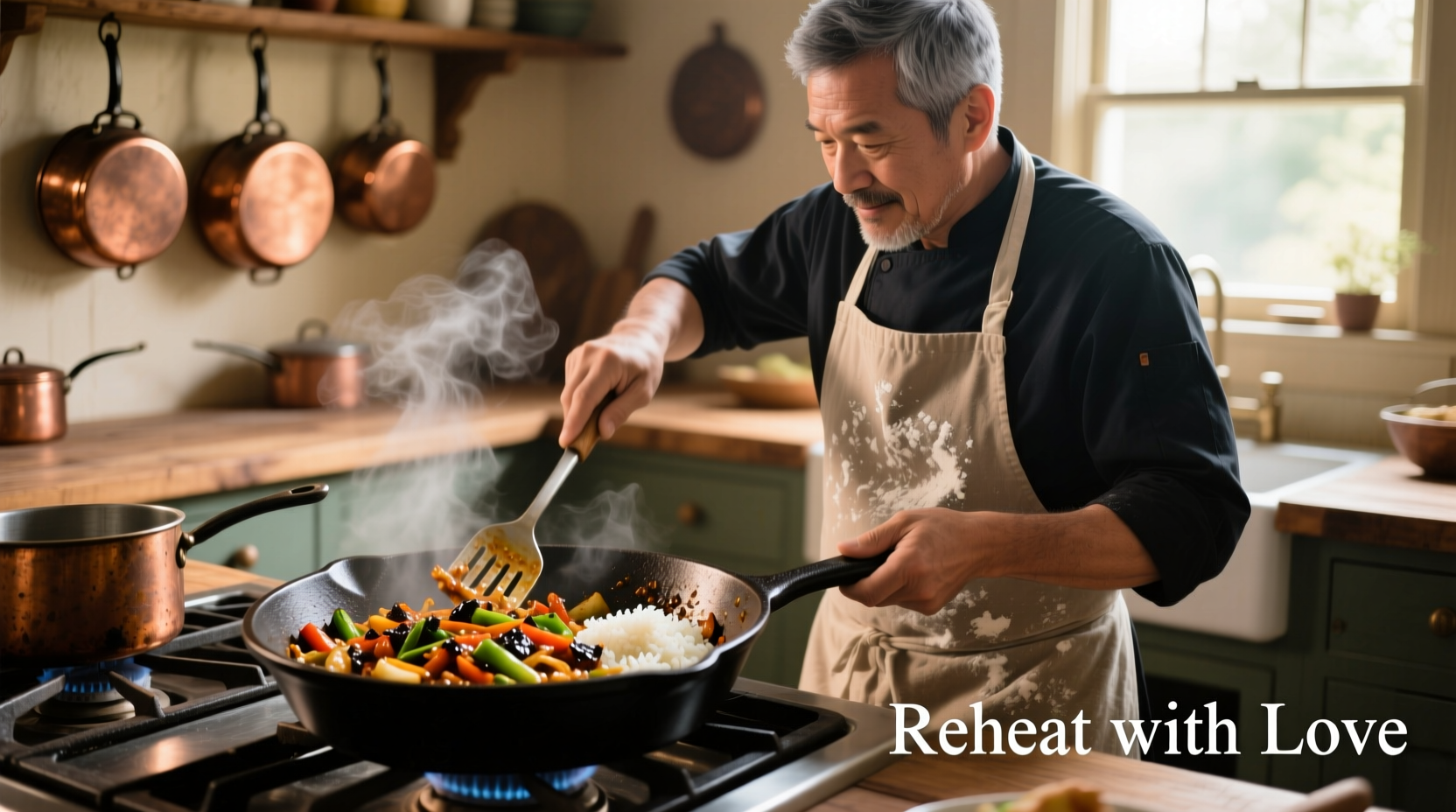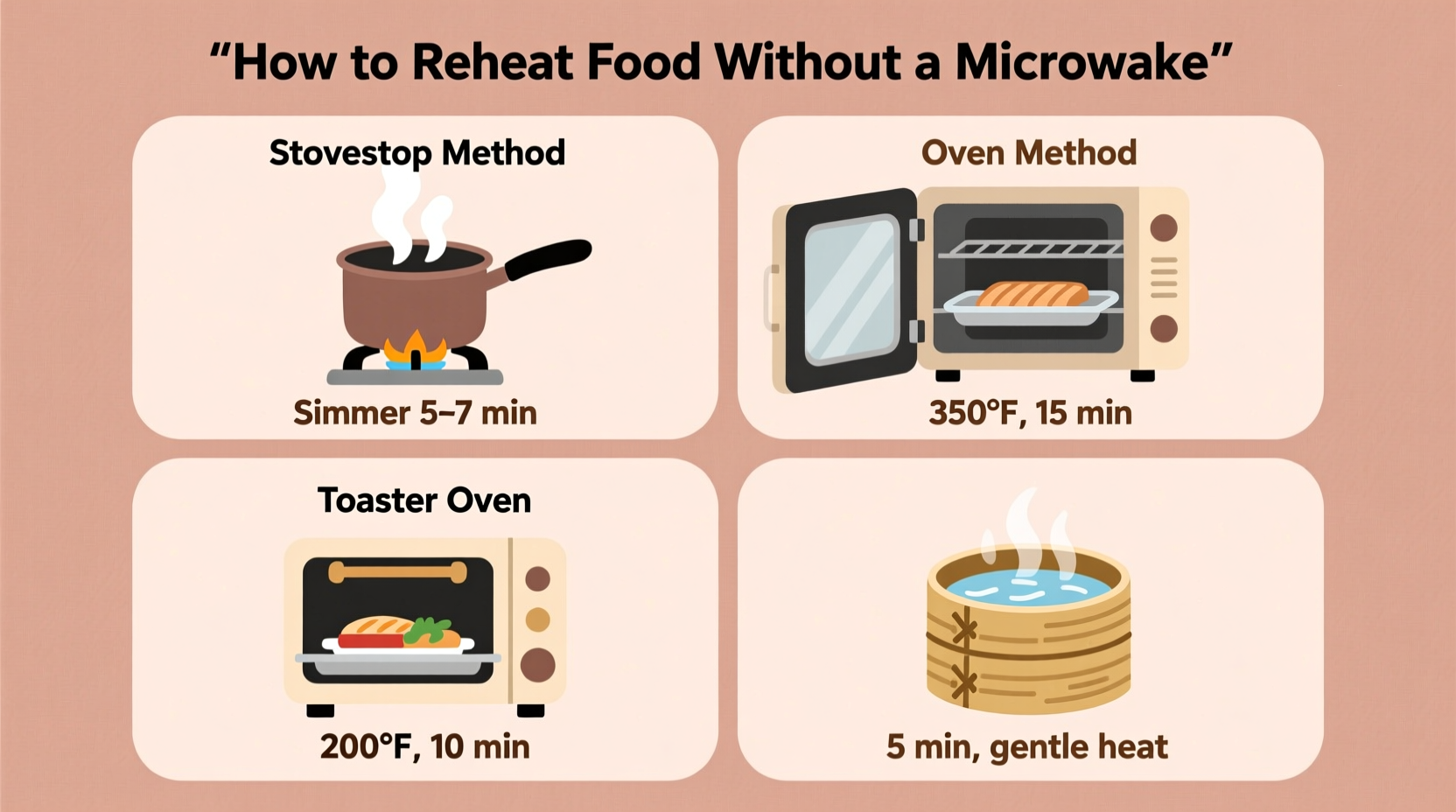Discover practical, kitchen-tested methods to revive your leftovers when you don't have microwave access. Whether you're in a dorm room, traveling, or just prefer traditional reheating techniques, these approaches maintain flavor and texture while ensuring food safety.
Why Proper Reheating Matters Beyond Convenience
Improperly reheated food doesn't just taste disappointing—it poses real health risks. According to the USDA Food Safety and Inspection Service, foodborne illnesses cause approximately 48 million illnesses annually in the United States. The critical safety threshold? Reheating all leftovers to an internal temperature of 165°F to eliminate harmful bacteria like Salmonella and E. coli. Their research confirms that thorough reheating destroys pathogens that may have developed during storage.
Your Step-by-Step Reheating Toolkit
Oven Method: Best for Crispy Results
Perfect for pizza, casseroles, and roasted vegetables. Preheat to 300-350°F. Place food in an oven-safe dish, adding a splash of water or broth to prevent drying. Cover with foil for even heating, then remove during the last 5 minutes for crisping. Rotate the dish halfway through for consistent results.
Stovetop Technique: Ideal for Sauces and Soups
Use medium-low heat in a non-stick pan. Add 1-2 tablespoons of liquid (water, broth, or oil) to create steam. Stir frequently using a silicone spatula to prevent scorching. This method excels for stir-fries, pasta dishes, and gravies where texture preservation matters most.
Air Fryer Approach: Revives Fried Foods
Set to 300-350°F for 3-8 minutes depending on portion size. Lightly spray food with oil to restore crispness. Shake the basket halfway through cooking. This technique works wonders for french fries, chicken wings, and spring rolls without making them soggy.
Toaster Oven Alternative: Energy-Efficient Option
Follow oven instructions but reduce time by 25% due to concentrated heat. Position food on the middle rack for optimal circulation. Ideal for small portions when you want to avoid heating a full-sized oven.
| Food Type | Best Method | Key Tip |
|---|---|---|
| Pizza | Skillet + lid | Add water droplets to create steam for crispy crust |
| Rice | Steamer basket | 1 tsp water per cup rice prevents hardening |
| Fried chicken | Air fryer | 325°F for 5 minutes restores crunch |
| Casseroles | Oven | Covered for first 10 minutes locks in moisture |
Food-Specific Reheating Strategies
Reviving Pizza Without Sogginess
Place slices in a cold non-stick skillet, cover with a lid, and heat on medium-low. The trapped steam revives the cheese while the direct contact creates a crispy crust. Add 3-4 water droplets around the edges for optimal steam generation. After 3-4 minutes when cheese melts, remove lid for final crisping.
Restoring Pasta Perfection
Submerge in simmering water for 30-60 seconds, stirring gently. Drain immediately and toss with sauce. For cream-based dishes, use a double boiler method: place pasta in a heatproof bowl over simmering water with a splash of milk to prevent separation.
Saving Fried Foods
The USDA National Institute of Food and Agriculture confirms that rapid reheating preserves crispness. Air fryers excel here at 325°F for 4-6 minutes. For stovetop revival, use a wire rack over simmering water to allow steam to escape while reheating.
Critical Safety Considerations
Always follow these food safety protocols when reheating without a microwave:
- Check internal temperature with a food thermometer at multiple points
- Reheat only once to minimize texture degradation
- Consume immediately after reheating
- Discard leftovers left at room temperature over 2 hours
According to FDA guidelines, the "danger zone" for bacterial growth spans 40°F to 140°F. When reheating, move food through this zone quickly by using adequate heat. Never partially reheat food with intentions to finish later.

Pro Tips for Flavor Preservation
Add moisture strategically: a teaspoon of broth for meats, water for grains, oil for vegetables. Cover dishes during initial heating to trap steam, then uncover for final crisping. For sauces and soups, reheat gradually while stirring to prevent separation. When reheating multiple components (like a meal with protein and sides), heat denser items first, adding quicker-cooking elements later.
When Not to Reheat Certain Foods
Some foods deteriorate dangerously when reheated improperly:
- Eggs: Can become rubbery and unsafe if not heated thoroughly
- Rice: Contains Bacillus cereus spores that survive cooking and multiply at room temperature
- Spinach and leafy greens: Nitrates convert to potentially harmful compounds
For these items, consume cold or prepare fresh when possible. If reheating rice is necessary, add ample liquid and ensure thorough, even heating to 165°F throughout.
Energy Efficiency Comparison
While microwaves use about 600-1200 watts, alternative methods vary significantly:
- Toaster oven: 1200-1800 watts (but heats faster for small portions)
- Stovetop: 1500-3000 watts depending on burner size
- Air fryer: 800-1500 watts (most efficient for single servings)
For single portions, toaster ovens and air fryers often consume less energy than conventional ovens. The U.S. Department of Energy notes that smaller appliances can reduce energy use by 30-50% compared to full-sized ovens for reheating tasks.
Troubleshooting Common Reheating Problems
Dry results: Always add moisture before reheating. For meats, place in broth; for grains, mist with water.
Soggy textures: Uncover during final heating phase. For fried foods, use air circulation methods like wire racks.
Uneven heating: Stir or rotate food midway. Cut large items into uniform portions before reheating.











 浙公网安备
33010002000092号
浙公网安备
33010002000092号 浙B2-20120091-4
浙B2-20120091-4